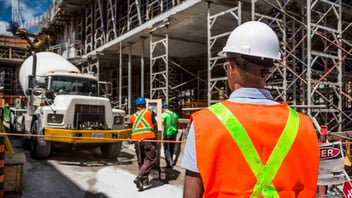Even the most expansive construction company doesn't have every potential type of skilled laborer on staff. Hiring subcontractors is an integral part of the industry, but each new company that joins a project creates a challenge.
Therefore, it's vital to ensure all legal requirements are addressed. Here's how to manage liability concerns for subcontractors.
→→ FREE Download: How To Turn Your Safety Program Into A Full Blow Safety Culture
What Risks Do Subcontractors Face?
One of the most important steps when managing subcontractor liability is understanding the kind of risk they face on the job. The exact details may vary from company to company, but they all face some form of risk. A few common categories include:
-
Operational: Safety, quality control, productivity, supply chains
-
Legal: Contracts, payment conditions, disputes
-
Financial: Payments, cash flow, insurance
-
Regulatory: Contract law, local, state and federal laws
-
Environmental: Environmental risks, regulations, pollution and spills
This is by no means an exhaustive list, but it gives you a good idea of what sort of liability risks subcontractors face. The threats will vary depending on the kind of subcontractor you're looking for, your location, the type of project and even the time of year if severe weather becomes a concern.
Understanding Risk Transfer
One other thing you need to understand is the concept of risk transfer. The biggest goal here is to transfer the risk to the party that's closest to the source. Doing this removes some of the liability from the general contractor, and it also puts it squarely into the hands of the group best able to deal with it.
This can go either way. You can transfer the risk downstream from the contractor to the subcontractor for things like insurance and back upstream for things like contract law.
Managing Subcontractor Liability Concerns
What can you do as a business owner to manage subcontractor liabilities? Consider and implement these four points:
1. Vet and Prequalify Your Subcontractors
One valuable tool in your belt when it comes to preventing liability issues is vetting and prequalifying your subcontractors before hiring them. Background checks and thorough vetting help ensure there aren't any problems with the company before they come back and bite you.
Requiring that any potential subcontractor fill out a pre-qualification quiz can make it easier to find one that will mesh with your values and help you meet your deadlines instead of causing more problems.
2. Require and Enforce Strong Safety Practices
On-the-job safety is more important than ever, especially on construction sites when dealing with heavy equipment or bulky materials. In 2016, OSHA reported 4,693 workplace fatalities in the construction industry, with 21.1% occuring on building sites. Require strict safety practices and enforce all safety protocols to prevent work-related injuries and liability issues.
While your team might meet OSHA regulations, there are no guarantees that subcontractors will unless you implement those safety practices.
3. Meet All Minimum Insurance Requirements
Depending on your location, insurance may be your responsibility or it may be up to your subcontractor. In either case, ensure that your subcontractors meet all minimum requirements before they arrive on the job site for the first day of work.
This also takes on some of the aspects of risk transfer, especially if your contractor brings their own insurance coverage with them. Any liability or insurance claims in those cases will fall squarely on their shoulders.
4. Utilize a Quality Control Plan
You hopefully don't need to micromanage your subcontractors, but it's a good idea to come up with a quality control plan to give you a little bit of oversight. A comprehensive strategy can help ensure the job gets done and meets your specifications, as well as any local or state building codes.
You don't necessarily need to hover over their shoulders while they work, but you want to make sure your subcontractors are providing quality work.
Managing Liability Concerns
In a perfect world, everyone would do their job well, and there would be no need for insurance, additional oversight or safety protocols to prevent on-the-job injuries. In reality, business owners and contractors need to take all the necessary precautions to manage subcontractor liability. This is not an exhaustive list by any means, but it should be sufficient to help you get started.
Author
Evelyn Long is the editor-in-chief of Renovated, where she covers construction labor and safety advice for industry professionals. Readers can keep up with Evelyn’s work on Twitter.




.png?width=352&name=qr%20codes%20in%20a%20pile%20(1).png)

Leave a Comment